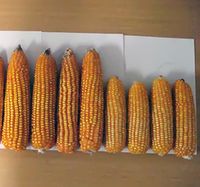Biochar
A certain prolific e-mailer, who shall remain nameless (but who happens to have filled my life for the last 42 years), keeps filling my inbox with messages about biochar. So that I will not be accused of ignoring this fascinating topic here are my thoughts on the subject. And, talking about biochar opens the whole topic of biomass fuels and the complications (is nothing ever easy in this energy debate?) of carbon release vs. carbon sequestration when using plant based fuel.
The simplistic argument is that by using wood and other plant material we are being carbon neutral. The tree would have died and given up its carbon anyway, so why not burn it, use the energy and plant another tree to replace it? The problems with that simple model are many. First, timing; the carbon is released now, the replacement tree will take years to grow. OK, so we use grass, burn now, grow back in a few months. Second: not all the carbon in a crop is released when it is left to rot back into the ground. It is taken up by bacteria and goes to replenish the top-soil (which is another commodity being lost in our agri-business world). And a tree converted to other things like buildings, furniture, and even newsprint will store the carbon for a long time, rather than giving it up now.
I have a logical problem with biofuel; the essential factor in growing plants is sunlight. So why employ an exquisitely complex living material that takes land and water and nutrients from the soil to simply burn as an energy source – when we can just take the sunlight directly and use it to generate electricity? OK, so we can transport biofuels to the point of use, and we can store it, burn it day or night, summer and winter. A major consideration I grant you, but the ability to store sun-generated electricity exists and we should move in that direction as fast as we can.
Which brings me to my great gut fear about biofuels; actually not so much gut as a realistic analysis of what has already happened around the world. As soon as the need for a cheap plant product arises, be it for ethanol production, or woodchips for paper, then large tracts of land are given to monocultures to produce the required species. The long term impacts are loss of plant and animal diversity, depletion of the soil, displacement of local populations, salination, interference with water run off and so forth. I have seen this in the Tasmanian blue-gum (a eucalyptus species) plantations in south-west Australia – used for wood-chips, and at second hand by the increases in food prices due to ethanol production.
In Germany burning wood and wood pellets as supplementary fuel to energy efficient houses is one recommend alternative to conventional fuels like oil and gas. The argument is that the wood, and the pellets, are waste products of normal forest management and wood products manufacture (a large amount of the pellets come from sawdust waste from wood floor makers). It’s hard to argue against the German approach given their mania for making houses more efficient, and given their solar leadership. As long as the burning of biomass is a sideline, using waste, I guess it makes sense at least in the short term.
With all those preconceptions that out of the way – what is biochar anyway?
Wikipedia defines it as “charcoal created by pyrolysis of biomass, and differs from charcoal only in the sense that its primary use is not for fuel, but for biosequestration or atmospheric carbon capture and storage”.
Biochar, like traditional charcoal, is created by heating biomass in a low oxygen environment. The reaction is called “pyrolysis” and once started it is self-sustaining, requiring no further outside energy input. One byproduct of the process is “syngas” which can be used as an alternative fuel substitute.
Syngas consists primarily of hydrogen, carbon monoxide, and very often some carbon dioxide. It can be used as a substitute for natural gas, or further processed to supply synthetic petroleum. Sounds fantastic, however it has less than half the energy density of natural gas.
What most people get excited about is that the biochar can be plowed back into the soil to enrich it, and there is some evidence that the results, in terms of enhanced fertility, are quite impressive.
And because the carbon is in a tightly bound molecular structure it decomposes slowly, so storing carbon in the soil, rather than releasing it.
The realists view?
- It is another technology we need to explore and use.
- We need to be careful not to hype the benefits – the law of unintended consequences never goes away. There are voices (like this one, and this) warning of the potential dangers
- We need to ask the number question! Assume that sunlight contains 100Watts/m2, plants have a conversion efficiency of about 0.5%, giving just 0.5Watts/m2. (There are differing numbers for different plant species, and locations, but this number seems a reasonable current average). You then need to subtract the energy required to farm and process and transport, (and the losses incurred in the process of farming, processing etc.) the delivered fuel, to end up with a net energy output.
- The value of the biochar in storing carbon and enriching the soil is harder to calculate, but needs to be done before we can jump onto this alternative with full enthusiasm.
Posted: September 19th, 2010 under Uncategorized.




Leave a Reply
You must be logged in to post a comment.